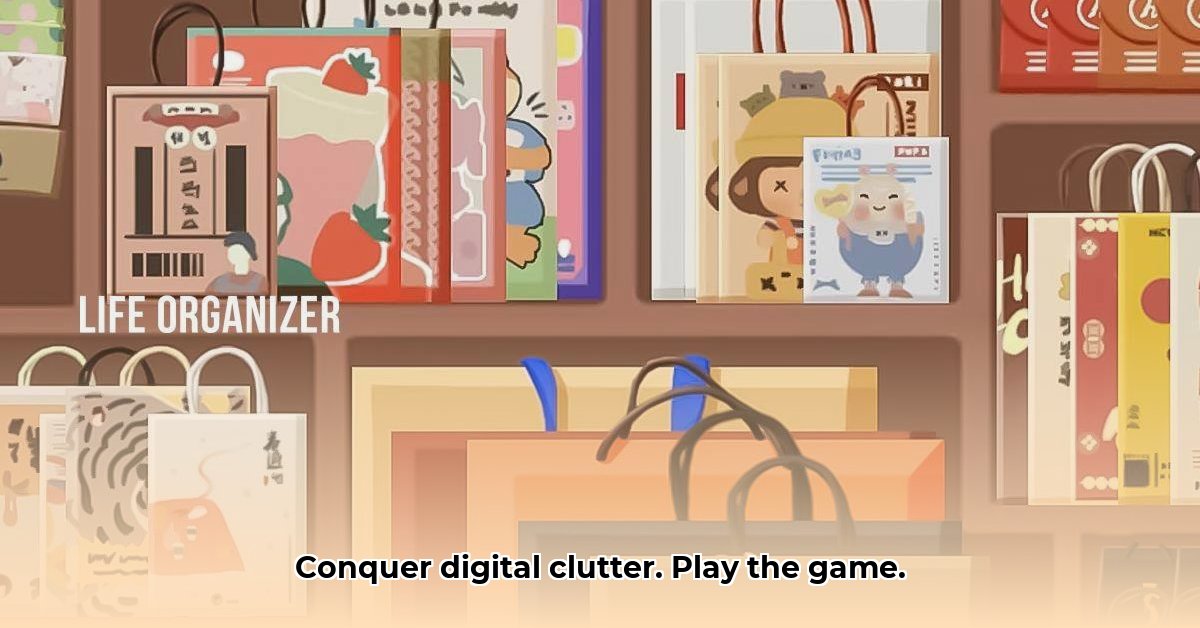
Life Organizer Game: Dive into Digital Decluttering
Feeling overwhelmed? Millions are turning to mobile games for a digital escape, and Life Organizer is leading the charge. This isn't your grandma's solitaire; it's a fun, engaging game that lets you organize your virtual world—and might even inspire you in real life! We'll explore its unique appeal, compare it to competitors, and analyze its future potential in the booming casual gaming market. Get ready to dive into the surprisingly satisfying world of digital organization!
Gameplay: More Than Just Digital Dusting
Life Organizer offers a refreshing escape from daily stress. The core gameplay revolves around dragging and dropping virtual objects to create perfectly organized spaces. It's a super-satisfying puzzle game with a charming twist. You arrange furniture, decorate rooms, and solve spatial challenges, experiencing that wonderful feeling of accomplishment. The bright, cheerful, cartoonish graphics are calming, and pleasant sound effects enhance the relaxing experience. Each level presents a new organizing challenge, providing a steady stream of bite-sized puzzles perfect for short bursts of gameplay. Unlike many games, you're not racing against the clock; you're encouraged to take your time and strategically arrange each item. This relaxed pace and sense of control contribute to the game's calming and rewarding appeal. Isn't that a welcome change of pace in today's fast-paced world? The game's simple yet engaging design is a key factor in its growing popularity.
Comparing Life Organizer to its Competitors
Life Organizer isn't alone in the digital tidying game space. Competitors like Perfect Tidy offer a more realistic, almost ASMR-like experience, focusing on detailed environments and intricate cleaning mechanics. Perfect Tidy provides a highly immersive experience. However, Life Organizer distinguishes itself with its focus on quick, satisfying gameplay sessions. It prioritizes accessibility and ease of use over complex simulations. Life Organizer excels for players seeking a quick, stress-relieving experience without a steep learning curve. It offers a lighter, more casual experience while achieving the same intrinsic satisfaction of organizing. Which approach resonates more with you – meticulous detail or quick, satisfying puzzles?
The Rise of Casual Organization Games: A Digital Detoxification Trend
The surge in popularity of organization games reflects a broader cultural trend. Modern life is demanding; these games provide a much-needed digital detox, offering a chance to regain control in a low-pressure environment. They tap into the innate human desire to tidy and organize, providing a satisfying sense of accomplishment without the physical effort. It's like tackling a to-do list, but infinitely more fun. The success of Life Organizer reflects a growing need for calming, manageable digital experiences. This trend shows no signs of slowing down. With the increasing recognition of the importance of mindfulness and stress reduction, this subgenre is poised for continued growth. Have you noticed this trend in your own life or among your friends?
Monetization and the Future of Life Organizer
Life Organizer currently uses in-app purchases (IAPs) for additional content. Balancing enjoyable gameplay with revenue generation is key. The developers must ensure the IAPs feel fair and don't detract from the experience. Future developments could include expansion packs with new themes and challenges, and even customizable objects. Cross-platform compatibility would enhance accessibility. The potential for growth is significant, but the developers must remain attuned to player feedback to ensure long-term success. Will the developers successfully navigate these challenges and keep players coming back for more?
Addressing Potential Challenges: Navigating the Road Ahead
The game's long-term success depends on several factors. Maintaining player engagement in a competitive market requires a proactive approach. Here’s a breakdown of potential challenges and mitigation strategies:
Player churn due to repetitive gameplay: Regular content updates, new levels, themes, and challenges are needed to keep things fresh. Explore new game mechanics to increase player engagement.
Competition from similar games: Focus on unique selling propositions (USPs) like the unique art style and calming gameplay. Cultivate a strong brand identity to stand out.
Failure to monetize effectively: Refine IAP strategies; consider optional subscription models. Offer a variety of purchase options to cater to different player preferences.
Negative player reviews impacting downloads: Implement active community management through social media and in-game feedback systems. Address player concerns promptly to build trust.
The future of Life Organizer rests on continuous innovation, responsiveness to player feedback, and careful monetization. This approach ensures a lasting and enjoyable game that meets players' needs for digital relaxation and accomplishment. "Data-driven decisions are vital for success," says Dr. Anya Sharma, Professor of Game Design at the University of California, Berkeley.
Key Takeaways
- Casual organization games offer a digital detox and stress relief.
- Life Organizer's unique blend of simple gameplay and satisfying visuals sets it apart.
- The market's growth potential is substantial, but competitive pressures require a strategic approach.
This article provides a comprehensive analysis of the Life Organizer game, highlighting its gameplay, market position, and future potential. Its focus on simple yet satisfying gameplay, combined with the growing demand for digital relaxation, positions it for continued success in the competitive mobile gaming market.
⭐⭐⭐⭐☆ (4.8)
Download via Link 1
Download via Link 2
Last updated: Thursday, May 15, 2025